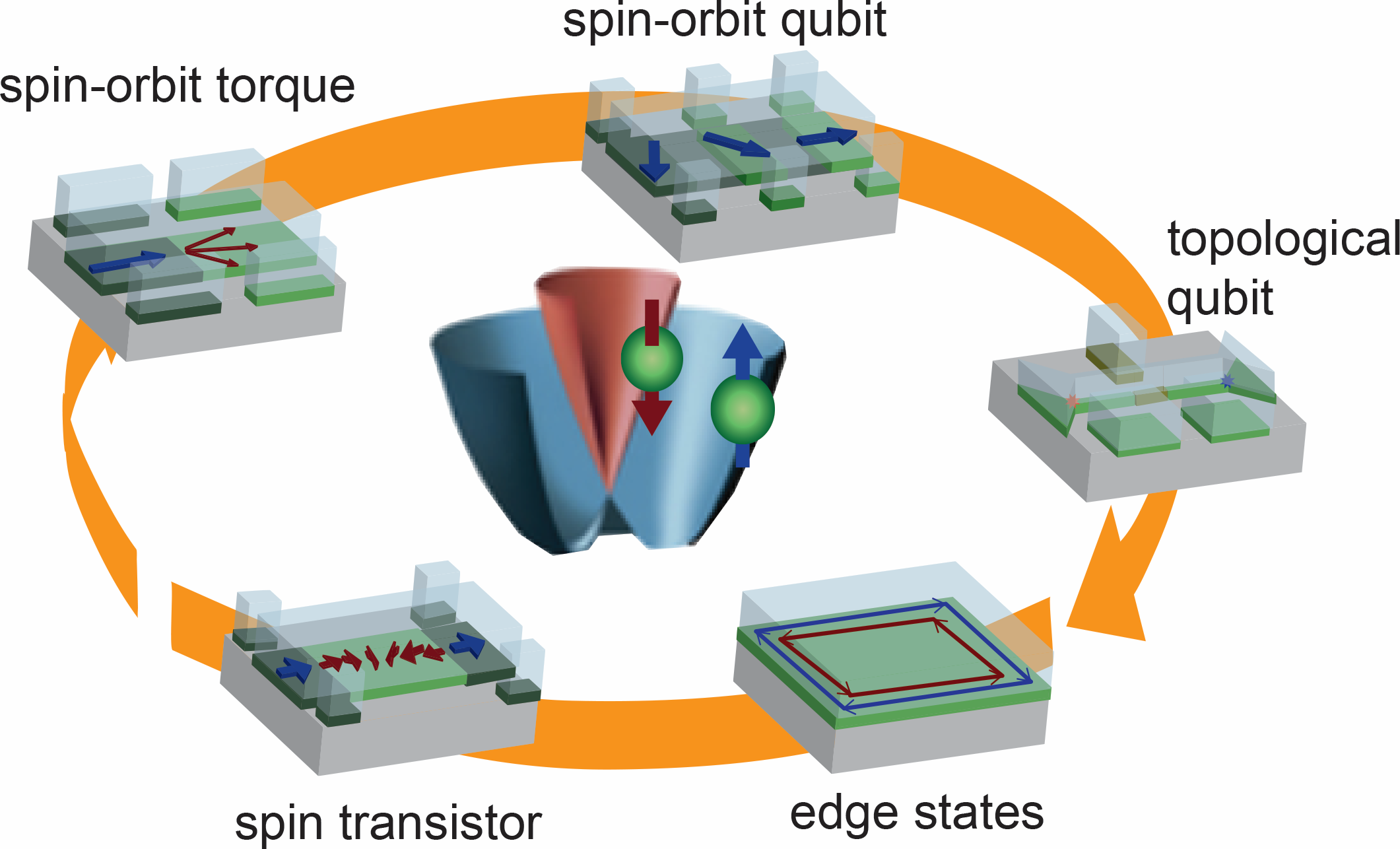 This project focuses on the physics of low dimensional materials and devices for quantum electronics and spintronics. The researchers involved are expert in the physics of superconducting and strongly correlated materials, in the Josephson effect from micro to nano-scales, in nanodevices, like Josephson junctions and field effect transistors made of correlated oxides, graphene and superconductors, as well as in their characterization employing both low-temperature magneto-transport measurements and advanced x-ray spectroscopies. Theoretical activities are focused on the prediction of novel physical quantum phenomena and in the interpretation of experimental results.
This project focuses on the physics of low dimensional materials and devices for quantum electronics and spintronics. The researchers involved are expert in the physics of superconducting and strongly correlated materials, in the Josephson effect from micro to nano-scales, in nanodevices, like Josephson junctions and field effect transistors made of correlated oxides, graphene and superconductors, as well as in their characterization employing both low-temperature magneto-transport measurements and advanced x-ray spectroscopies. Theoretical activities are focused on the prediction of novel physical quantum phenomena and in the interpretation of experimental results.
Activity Leader: Marco Salluzzo
State of art
In the recent years, materials systems whose physics is dominated by quantum effects are gaining a growing interest among the condensed matter community. These include graphene, topological insulators, Van der Waals atomic crystals, unconventional and two-dimensional superconductors. Most of them derive their properties from the reduced dimensionality, and in particular from the confinement of electrons in two and even one dimension, through atomic engineering of the interfaces and by lateral confinement obtained by synthesis and by nano-patterning. Moreover, it has been demonstrated that low-dimensional nanostructures in curved geometries behave quite differently than their flat analogue, because of the emergence of an effective and controllable Rashba spin-orbit field generated by the bent geometry, with crutial effects on spin texture and superconducting and topological properties. The complex electronic states generated in these materials, and related devices, are the ideal playground for the study of new quantum phenomena and new phases of matter, where quantum coherence can play an important role up to the macroscopic scale. This is expected to provide yet unpredictable outcomes for the science and technology of next decades and to open new directions in micro-nano electronics, spintronics and superconducting electronics, enabling the development of devices based on novel, more powerful, logic schemes to increase computing power and to reduce energy consumption.
Objectives
The general objective of the project is to establish a novel material platform for quantum electronics and spintronics. To this purpose, the research activities include the fundamental understanding of the novel quantum physics in low-dimensional materials by combining diverse and complementary theoretical and experimental approaches from the advanced synthesis, to the standard and advanced, synchrotron based, x-ray spectroscopies and structural methods, and to the realization and ultra-low temperature study of tunable nanodevices, including Josephson junctions and field effect transistors. Among the topic that will be specifically addressed we mention the metal and superconducting to insulating transition in low dimensional materials, the unconventional superconductivity in high Tc 2D-cuprates, 2D-materials with strong spin-orbit coupling, and Ferromagnetic/Superconducting heterostructures. We aim in particular at the realization of materials with novel functionalities, like interface superconductivity, magnetism and ferroelectricity, which can be manipulated either by applying external stimuli, as magnetic/electric fields, spin-polarized current, and photon irradiation, or by tuning geometric curvature.
Main topics:
- Superconducting/ferromagnetic heterostructures, Josephson devices, and hybrid systems
- 2D-materials, such as graphene, and MoX2, WX2 (X=Se, S) Bi2Se3, Bi2Te3 topological insulators
- Low-Temperature electrical and thermal transport and quantum effects in (nano)devices, like Josephson junctions and field effect transistors, based on superconducting and seminconducting materials, including Weyl semimetals, and topological insulators
- High mobility 2D electron/hole gas based on oxide hetereostructures, like delta-doped LAO/STO and ZnO/MgZnO
- X-ray spectroscopies at large scale facilities on low dimensional superconductors and complex heterostructures
- Superconductivity, magnetism, ferroelectricity and topological states in novel spin polarized electron gases
- Growth of low-dimensional systems with atomic-level control supported by real-time/in-situ monitoring
- Advanced surface and interface spectroscopies in novel materials and devices: atomistic simulations and experiments
- Fluctuation spectroscopy of superconductors
- Bose-Einstein condensation of excitons, exciton-mediated superconductivity
- Novel platforms for topological effects based on compact three-dimensional curved nano-architectures
Methodologies
Our project will contribute to the field of quantum electronics and spintronics taking advantage of an interdisciplinary approach, which collects competences available in our Institute in the fields of:
- Low-temperature magneto-transport phenomena
- Josephson physics
- Non-equilibrium and quantum transport
- Advanced spectroscopies
- Epitaxial growth
- Nano-fabrication/nano-characterization technologies
- Device physics
- Theory of quantum transport in mesoscopic/nanoscopic systems
- Theoretical modeling and numerical simulation of quantum coherent phenomena in realistic devices
Main collaborations
- University of Leiden (J. Aarts)
- Rutgers University, New Jersey, USA (N. Andrei)
- DIPC Donostia-SanSebastian (D. Bercioux)
- Cambridge University (M. Blamire)
- CNRS-THALES( M. Bibes, Agnes Barthelemy)
- Argonne National Laboratory (A. Glatz)
- European Synchrotron Radiation Facility (N. B. Brookes)
- TU-DELFT (A. Caviglia)
- Universitè Paris Sud (N. Bergeal)
- CNRS and Institut de minéralogie, de physique des matériaux et de cosmochimie Université P. et M. Curie, Paris (M. Calandra)
- Bar-Ilan University, Israel (E. Dalla Torre, Beena Kaliski)
- University of Artois, Lille, France (R. Desfeux)
- Harvard University, Harvard, USA (E. Demler)
- Berkeley (Standing Waves group - C. Fadley of ALS)
- University of Geneve, Switzerland (T. Giamarchi, J.-M. Triscone)
- CSIC Madrid and Manchester Univ. (F. Guinea)
- UCM Madrid (J. Santamaria)
- CSIC Barcellona (J. Herranz, X. Torrelles)
- Max Planck Institute of Microstructure Physics (E. K. U. Gross)
- University of Cologne, Köln · II. Institute of Physics (A. Gruneis)
- CNRS Montpellier (B. Jouault)
- Max Planck Institute, Stuttgart (B. Keimer, J. Mannhart)
- Technische Universitat, München, Germany (M. Knap)
- University of Bonn, Germany (C. Kollath)
- Chalmers University of Technology, Sweden (F. Lombardi, A. Kalaboukhov)
- Laboratoire LPMMC, Grenoble, France (A. Minguzzi and F. Hekking)
- ENS Lyon, France (E. Orignac)
- BSUIR, Minsk (S.L. Prischepa)
- Twente Solid State Technology, Netherland (G. Rijnders, K. Koster)
- University of "Roma Tre", Roma, Italy (E. Silva, M. Grilli, C. Di Castro)
- Karlsruhe (Prof. Alexey Ustinov)
- University of Barcelona, Spain (J. Tejada)
MAIN ONGOING PROJECTS
| Type of project | Coordinator | Acronym / Title | SPIN Leader | Research Unit |
| UE Horizon 2020 MSCA- RISE |
Università Tor Vergata | Collective Excitations in Advanced Nanostructures COEXAN |
A. Kavokin | RM |
| UE Horizon 2020 FET Pro-Active |
CEA | MAGnetic nanoparticle based liquid ENergy materials for Thermoelectric device Applications MAGENTA |
A. Varlamov | RM |
| UE Horizon 2020 Eranet Quantera |
CNR SPIN | QUANtum Technologies with 2D-OXides QUANTOX |
M. Salluzzo | NA |
| UE Horizion 2020 Eranet Cofund Flag ERA II |
CNR SPIN | Revealing the potential of transition metal dichalcogenides for thermoelectric applications through nanostructuring and confinement MELODICA |
I. Pallecchi | GE |
| PRIN 2015 National Projects |
ND | NEW LIght on transient states in condensed matter by advanced photon - electron spectroscopies NEWLI |
F. Bisio | GE |
Just finished projects are listed below.
| Type of project | Coordinator | Acronym / Title | SPIN Leader | Research Unit |
| UE Horizon 2020 COST ACTION |
CNR SPIN | Towards Oxide-Based Electronics TO-BE (Cost Action) |
F. Miletto Granozio | NA |
| UE FP7 | CNR SPIN | Coherent heat and energy transport in quantum system COHEAT |
A. Braggio P. Solinas |
GE |
| UE PF7 | IFW | Curved nanomembranes for topological Quantum Computation CNTQC |
P. Gentile | SA |

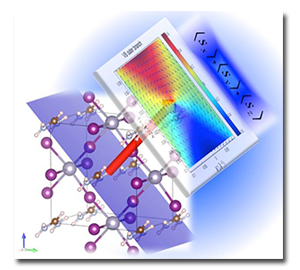 The project aims at understanding the fundamental microscopic mechanisms and the emergent physical phenomena of complex materials, which are characterized by a strong entanglement of spin-orbital-charge-lattice (SOCL) degrees of freedom, mainly driven by electron-electron correlations and spin-orbit interaction, and include the combination with quantum topology. Targeted material platforms, in bulk, thin-film and superlattice form, are based on transition metal oxides (TMO) at large, but also other transition-metal based systems where electron correlations and spin-orbit coupling can play a relevant role.
The project aims at understanding the fundamental microscopic mechanisms and the emergent physical phenomena of complex materials, which are characterized by a strong entanglement of spin-orbital-charge-lattice (SOCL) degrees of freedom, mainly driven by electron-electron correlations and spin-orbit interaction, and include the combination with quantum topology. Targeted material platforms, in bulk, thin-film and superlattice form, are based on transition metal oxides (TMO) at large, but also other transition-metal based systems where electron correlations and spin-orbit coupling can play a relevant role. 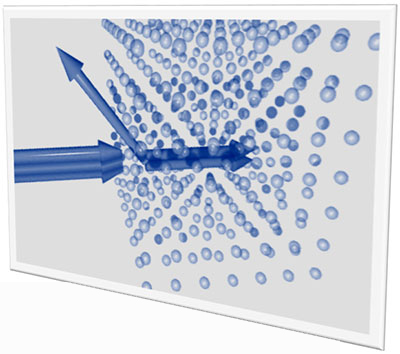 The light-matter interaction science and optics as well as the variety of their applications to probe/develop new materials, create innovative devices and techniques are the core of this project.
The light-matter interaction science and optics as well as the variety of their applications to probe/develop new materials, create innovative devices and techniques are the core of this project.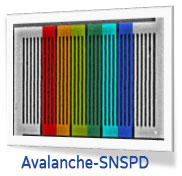
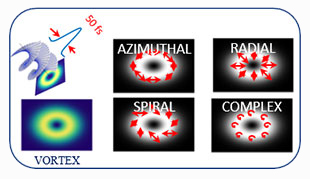
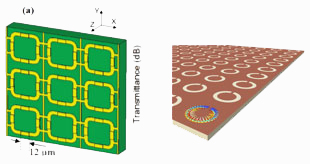
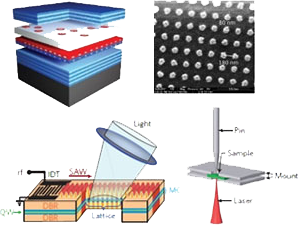


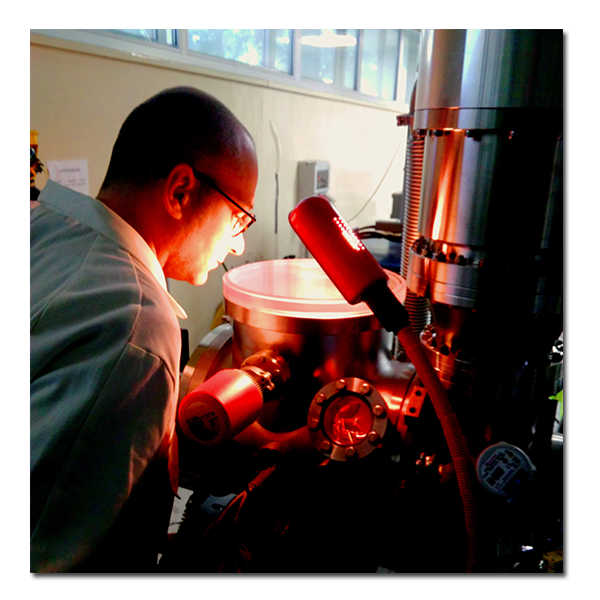 This project is aimed at investigating the fundamental properties of functional organic and inorganic materials, with specific responsiveness to physical (i.e. electromagnetic radiation, magnetic and electrostatic fields, heat, mechanical stress) and chemical (i.e. interaction with gas, liquid analytes, ionic species) external stimuli. These basic research efforts will be oriented to support the realization of innovative sensing and electronic devices to be mainly employed in the fields of biomedicine and smart systems. Further, this scientific chain will be completed with the development of computational techniques for the processing of data produced by such devices.
This project is aimed at investigating the fundamental properties of functional organic and inorganic materials, with specific responsiveness to physical (i.e. electromagnetic radiation, magnetic and electrostatic fields, heat, mechanical stress) and chemical (i.e. interaction with gas, liquid analytes, ionic species) external stimuli. These basic research efforts will be oriented to support the realization of innovative sensing and electronic devices to be mainly employed in the fields of biomedicine and smart systems. Further, this scientific chain will be completed with the development of computational techniques for the processing of data produced by such devices.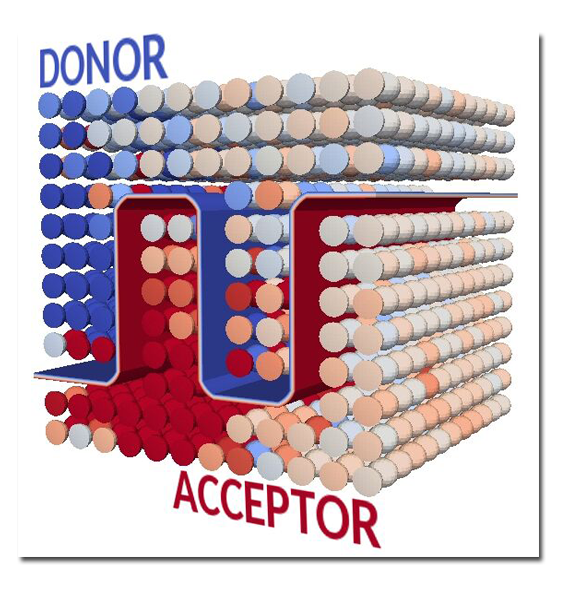 The scope of the present activity is the study, from the classical to the quantum level, of the fundamental processes involved in the motion of carriers (holes and electrons), lattice vibrations and other excitations in a large variety of materials and devices (including new generation solar cells, thermoelectrics, nanoelectromechanic devices, etc.) of interest for energy transport and conversion. For this purpose, different approaches will be available on the theoretical side, able to provide adequate description from the atomistic to the microscopic level, from quantum mechanics and ab initio approaches to molecular dynamics and modelling of strongly correlated materials. Both equilibrium and out-of-equilibrium phenomena (like the interplay of electronic and vibrational degrees of freedom in ultra-fast pump-and-probe experiments) will be object of investigation. The theoretical efforts will be accompanied by a continuous and fruitful comparison and interplay with the experimental results, as those provided, e.g., by angle-resolved photoemission, optical spectroscopy - both linear and non-linear - and nano-spectroscopies. Special focus will be given to novel two-dimensional and hybrid layered materials, and complex interfaces. The competencies available to the activity will also allow to get insights on nanocomposite materials and materials at the interface between biology and physics.
The scope of the present activity is the study, from the classical to the quantum level, of the fundamental processes involved in the motion of carriers (holes and electrons), lattice vibrations and other excitations in a large variety of materials and devices (including new generation solar cells, thermoelectrics, nanoelectromechanic devices, etc.) of interest for energy transport and conversion. For this purpose, different approaches will be available on the theoretical side, able to provide adequate description from the atomistic to the microscopic level, from quantum mechanics and ab initio approaches to molecular dynamics and modelling of strongly correlated materials. Both equilibrium and out-of-equilibrium phenomena (like the interplay of electronic and vibrational degrees of freedom in ultra-fast pump-and-probe experiments) will be object of investigation. The theoretical efforts will be accompanied by a continuous and fruitful comparison and interplay with the experimental results, as those provided, e.g., by angle-resolved photoemission, optical spectroscopy - both linear and non-linear - and nano-spectroscopies. Special focus will be given to novel two-dimensional and hybrid layered materials, and complex interfaces. The competencies available to the activity will also allow to get insights on nanocomposite materials and materials at the interface between biology and physics.





